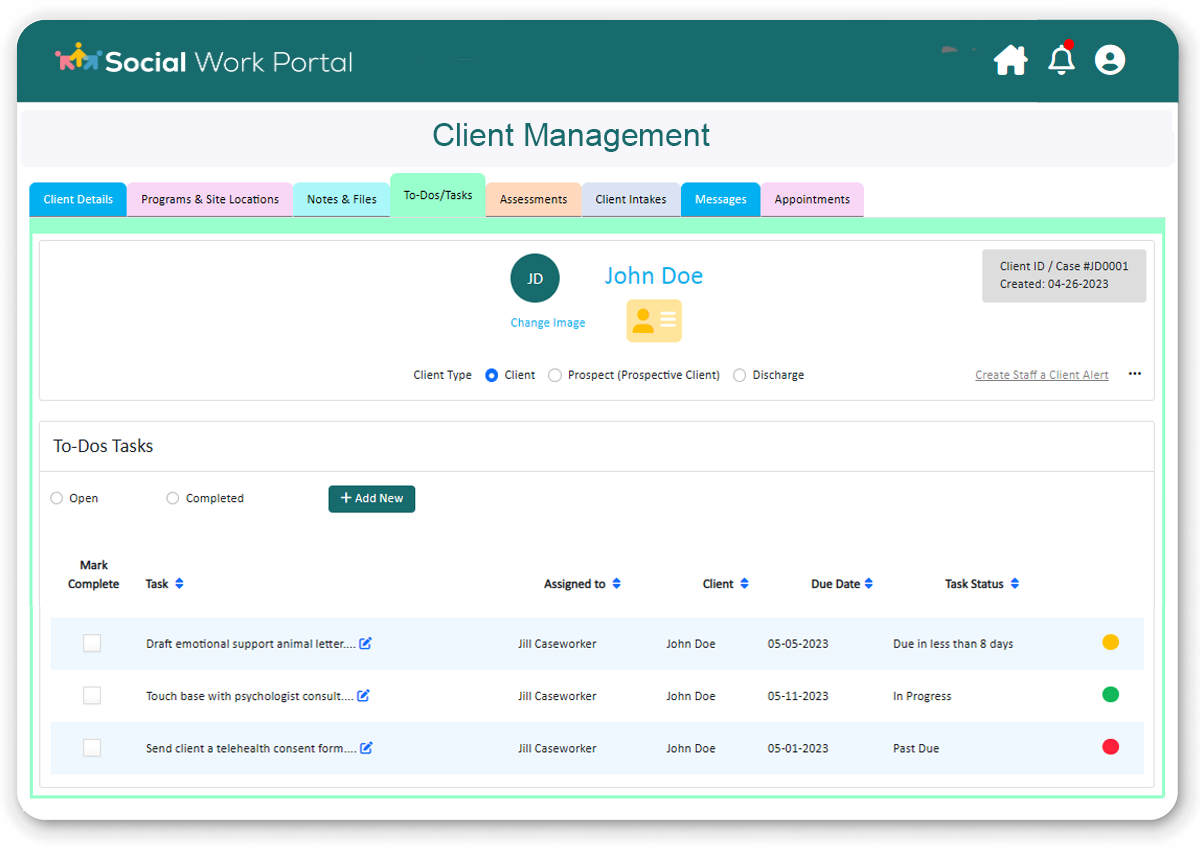The Ultimate Guide to Setting Up a Nonprofit Board
Building an effective nonprofit board can be the difference between stagnation and success. In the realm of nonprofit organizations, the board of directors serves as the cornerstone of governance.
It’s a group of individuals who volunteer their time and expertise to oversee the organization’s mission, finances, and strategic direction. A well-structured and effective non-profit organization board of directors is essential for a nonprofit’s success and sustainability.

We’ll walk you through how to set up a board of directors in a non-profit organization that drives success, turning your vision into measurable impact. Whether you’re looking for guidance on the structure of your board or tips on how to select non-profit organization board members, this guide has you covered.
Story Highlights
|
Why a Strong Nonprofit Board Matters
The board of directors in a non-profit organization is not just a formality. It’s the cornerstone of your nonprofit’s governance, strategic direction, and long-term sustainability. Strong NPO board members provide:
- Strategic Leadership: Non-profit organization board members guide your nonprofit’s mission and ensure alignment with long-term goals.
- Accountability: The board holds your leadership accountable, making sure decisions are made transparently and in the organization’s best interest.
- Fundraising and Advocacy: Many NGO board members leverage their networks and influence to generate resources and advocate for your cause.
Without a well-structured and active non-profit organization board of directors, even the most inspiring nonprofit can struggle to achieve its mission. A good board isn’t just about filling seats—it’s about selecting people who are deeply aligned with your vision, passionate about your cause, and equipped with the skills and experience to make meaningful contributions.
Do you have any questions about setting up a charity board of trustees or non-profit organization board of directors? Please reach out and let us know.
Step 1: Understand the Different Roles in a Nonprofit Board
Setting up an effective not-for-profit board of directors starts with understanding the various roles that contribute to its success. The most common structure includes three core groups: the board of directors, the executive committee, and sometimes, the board of trustees. Let’s break down the key players:
- Board of Directors: This group holds the highest responsibility for governance and decision-making. The NPO board of directors in a nonprofit organization is tasked with providing oversight, approving budgets, setting strategic direction, and ensuring that the organization adheres to legal and ethical standards.
- Board Chair (or President): The chair leads the board, ensuring that meetings are productive and that all board members are fulfilling their duties. They are the spokesperson for the board, collaborating closely with the Executive Director.
- Treasurer: This role is critical in managing the nonprofit’s finances, ensuring fiscal responsibility, reviewing budgets, and keeping the NPO board members updated on financial health.
- Secretary: The secretary ensures accurate record-keeping and is responsible for meeting minutes, board correspondence, and keeping track of important documents.
- Board of Trustees (Optional): In some cases, organizations also have a board of trustees non-profit, which may function similarly to the board of directors but with more of a focus on long-term financial sustainability, major fundraising campaigns, and legacy building.
Understanding these roles is crucial to building a board structure non-profit board that works cohesively. You’ll need to ensure that each member understands their responsibilities and is well-prepared to take on their role.
Step 2: Define the Ideal Nonprofit or NGO Board Structure
The board structure non-profit organizations adopt can vary significantly based on the organization’s size, mission, and stage of growth. The structure you choose should allow for diverse perspectives while ensuring efficient decision-making.
For most organizations, a not-for-profit board of directors will consist of 7 to 15 members, which strikes a balance between having enough input and avoiding too much complexity. Here’s how you might structure your board:
- Executive Committee: This includes the Chair, Treasurer, and Secretary, who meet regularly with the Executive Director to address urgent matters.
- Committees: Consider creating sub-committees focused on specific areas like fundraising, governance, programs, and finance.
- Advisory Board (Optional): Some organizations benefit from a board of advisors nonprofit group, which consists of experts who provide insights without the same legal and financial obligations as board members.
To ensure an effective board structure non-profit, organizations should aim for a diverse board that brings various skills—financial, legal, marketing, and nonprofit experience—to the table. Diversity of experience and thought drives better decision-making, fostering innovation and resilience.
Please reach out if you have any questions or feedback about creating a board of trustees non-profit group or non-profit board of directors structure.
Step 3: Recruit the Right NPO Board Members
Once you’ve determined your non-profit board of directors structure, it’s time to find the right people to fill those seats. Selecting non-profit organization board members is about finding individuals who align with your mission and have the skills, experience, and dedication to move your nonprofit forward.
Here are some qualities to look for in potential NPO board members:
- Passion for the Mission: Ensure that every non-profit organization board of directors member is deeply invested in the cause your nonprofit supports.
- Relevant Expertise: Look for individuals with skills that align with your organization’s needs, such as finance, law, governance, fundraising, or marketing.
- Fundraising Capability: Many nonprofits rely on board members to contribute financially or tap into their networks to raise funds. Consider asking candidates upfront about their ability to help in this area.
- Availability and Commitment: Make sure potential NGO board members have the time to actively participate in meetings, events, and committee work.
A strong not-for-profit board of directors is diverse, not only in demographics but in skill sets and perspectives. Make sure you avoid the common mistake of filling your board with friends or family—prioritize competency and dedication over-familiarity.
Step 4: Onboarding and Educating Your Board Members
Even if you recruit top-notch board members, your efforts will be wasted if they’re not properly onboarded and educated. Establishing a formal onboarding process ensures that every board member starts off with a clear understanding of their role, responsibilities, and how the board functions.
Key elements of an effective onboarding process:
- Mission Alignment: Help your board members understand your nonprofit’s mission, history, and current priorities.
- Board Manual: Provide new members with a board manual that includes bylaws, policies, financial statements, and meeting protocols.
- Orientation: Host a formal orientation session where new board members can meet the Executive Director, staff, and fellow board members. This helps establish strong working relationships.
- Ongoing Education: Offer regular training opportunities so your NPO board members can stay up-to-date on nonprofit governance best practices.
Educating your NPO board of directors also involves keeping them in the loop about ongoing projects, challenges, and successes. Ensure open lines of communication between board members and the Executive Director.
Please reach out if you have more questions about working with a not-for-profit board of directors or NPO board members.
Step 5: Establish Effective Governance Practices
Now that your non-profit board of directors structure is assembled, how do you ensure it operates effectively? Establishing sound governance practices is key to keeping your board of directors in a non-profit organization engaged, accountable, and aligned with the organization’s goals.
Key governance practices include:
- Regular Board Meetings: Schedule meetings at least quarterly, with a clear agenda sent in advance to keep the meetings focused and efficient.
- Committee Reports: Ensure that committees report back to the full board with updates and recommendations.
- Annual Board Retreat: Consider holding an annual board retreat to evaluate progress, discuss strategic direction, and build camaraderie.
- Board Self-Evaluation: Periodically evaluate your board’s performance to identify areas for improvement.
Step 6: Foster a Strong Relationship Between the Board & Executive Director
A strong partnership between the board and the Executive Director (ED) is critical to success. The board provides governance and strategic direction, while the ED handles day-to-day operations. Clear communication and trust between these two entities are essential.
To maintain a healthy relationship:
- Set Clear Expectations: Define the roles of the board and ED to avoid micromanagement.
- Regular Check-ins: Schedule consistent check-ins between the ED and board chair to discuss challenges and updates.
- Support, Don’t Supervise: The board should offer guidance and support to the ED without overstepping into operational tasks.
Conclusion: Non-profit Organization Board of Directors
Creating a board of directors in a nonprofit organization that drives success requires intentionality. From establishing the right board structure non-profit focus to recruiting passionate, skilled NPO board of directors members, each step is critical to building a nonprofit that not only inspires but creates a tangible impact. With the right board in place, your organization can confidently move toward fulfilling its mission and expanding its reach.
By following the steps outlined in this guide, nonprofit leaders can create a board that will help their organization thrive, ensuring long-term sustainability and success.
Case Management Software for Nonprofits
Successful nonprofits optimize their casework with the right tools. Social Work Portal’s Case Management Hub is a simple, yet robust casework software that makes managing nonprofit programs, intakes, and casework easier and more efficient.
Learn more & get your free trial.
FAQ: Non-profit Organization Board Members
What is a board of trustees non-profits use?
A charity board of trustees may function similarly to the board of directors but with more of a focus on long-term financial sustainability, major fundraising campaigns, and legacy building.
What is a board of advisors nonprofit?
In an NGO board structure, the board of advisors nonprofit group consists of experts who provide insights without the same legal and financial obligations as board members.
Why is onboarding a not-for-profit board of directors important?
Establishing a formal onboarding process ensures that every board member starts off with a clear understanding of their role, responsibilities, and how the board functions.
Note: Content on this website (socialworkportal.com) is copyrighted and protected under applicable copyright laws. Unauthorized reproduction, distribution, or use of any content from the website, without explicit written permission, is strictly prohibited. Read: Terms of Use.
Social Work Portal Disclaimer: Social Work Portal is not a social work agency and we do not refer social workers. This web site is provided for educational and informational purposes only and does not constitute providing medical advice or professional social and healthcare services. The information provided should not be used for diagnosing or treating a health problem or disease, and those seeking personal medical advice should consult with ... Read our full disclaimer here: Social Work Portal Disclaimer.

Image sources: Stock.adobe.com






